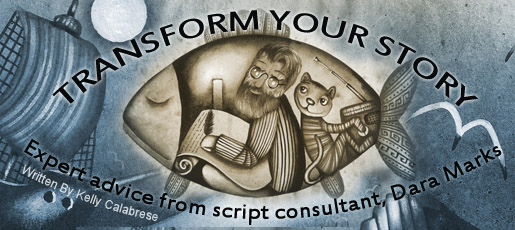Running a theater business is an exciting but daunting task. It requires immense dedication and hard work to make sure the show is successful, especially if you have kids in the play. For most people, this is a dream come true, as it allows them to combine their love of theater with their passion for helping young actors grow and develop. It’s important to understand all of the components that go into making sure your production runs smoothly and without incident.
You’re responsible for managing and running a successful operation. You must understand all aspects of the industry, from developing new concepts to marketing and advertising strategies. In addition, you must also be adept at creating strategic partnerships with other businesses to maximize profits and secure long-term success.
From finding the right space to building a passionate staff, there are many components to consider when opening a theater. With the right organization and planning, however, you can be successful in creating and running your own movie theater or playhouse.
The First Step – Finding a Location
The first step in starting your theater is finding the perfect location. Look for spots that have easy access from major roads, public transportation or local landmarks; this will make it easier for potential customers to find you. Additionally, assess the condition of the building you’re considering before signing any leases or contracts — does it need renovations? Will those renovations fit into your budget? Make sure to take all of these considerations into account before committing to any space.
Assembling Your Acting Team
Assembling a theater team can be an exciting process, especially if you’re bringing together actors with different skill sets and backgrounds. It’s paramount to select the right individuals for your theatrical needs. The best way to do this is by creating an effective auditioning process to find talented and qualified performers who are passionate about performing.
You need to define the roles that need to be filled for the production. Make sure you know how many people are necessary for each role; this will help narrow down your search and make it easier when casting from potential candidates during auditions. After defining roles, create audition materials that will accurately assess each candidate’s abilities in order to determine who fits best with the show concept.
You can pull monologues and scripts from DirectSubmit NYCastings. For auditions, you’ll want to choose a few different dates and times to make sure you accommodate everyone.
No matter how big or small your theater is, you should consider having multiple actors for each role. No doubt someone will call out sick. Consider having some swing actors.
“A swing is an off-stage performer responsible for covering any number of ensemble tracks, sometimes as many as 12 or more. An understudy is a performer cast in the ensemble of a musical (or a minor role in a play) who is responsible for covering a supporting or lead role.”
There’s a great article about Swings in Playbill.
Compiling Your Behind the Scenes Team
Your behind the scenes team is just as important as the players. It consists of individuals from all walks of life who are dedicated to bringing the story on stage to life. It should consist of directors, musical directors and choreographers, set designers, props, costume, hair and make-up, lighting and audio-visual media. Each member plays an important role in putting together a show that will entertain audiences.
The director is responsible for managing the entire production process — from auditions to rehearsals and finally to opening night. They provide guidance for the cast and crew throughout each step in order to ensure that everyone is working together harmoniously towards creating a successful performance. Additionally, they will make decisions about set design, costumes, music, special effects and more in order to bring the script alive on stage in its most spectacular form.
 Choreographers are invaluable to the success of a theater production. Their expertise in creating and arranging movements, both on and off stage, can help bring characters to life, heighten tension during intense scenes, or provide moments of levity throughout the performance. As such, it’s important for directors and producers to find choreographers who can interpret their vision and create dances that will engage audiences.
Choreographers are invaluable to the success of a theater production. Their expertise in creating and arranging movements, both on and off stage, can help bring characters to life, heighten tension during intense scenes, or provide moments of levity throughout the performance. As such, it’s important for directors and producers to find choreographers who can interpret their vision and create dances that will engage audiences.
The task at hand for a choreographer is as varied as the types of dance they must create — from traditional ballet to modern-day hip hop. The basic responsibility remains the same — to compose movement sequences that will add depth and emotion to each scene. Choreographers must collaborate with actors, designers, musicians and other creative partners in order to ensure each number fully conveys the story being told via dance.
The theater industry is full of talented and creative individuals, but none may be more important than the set designers. Set designers play an essential role in making sure that each production looks visually appealing and professional. They focus on the overall design of a performance space, working with directors to ensure that all elements are in place for a successful show.
Set designers must understand the purpose of each scene, as well as all technical aspects of the theater. This requires them to have an eye for detail and an understanding of lighting, sound effects, special effects and other components. In addition to this knowledge, they also need strong communication skills so they can collaborate effectively with other members of the production team. Set designers create unique settings for theaters that allow audiences to truly appreciate what is happening onstage.
Props, short for properties, are a vital element of any theatrical production. From the elaborate set pieces used on a Broadway stage to the simple items necessary to evoke a scene in an off-Broadway production, props help bring stories and characters to life. Props can range from small mundane objects like keys or newspapers to large and extravagant pieces like furniture or musical instruments. These essential components of theater add texture, authenticity and depth to the performance while helping actors remain in character.
When selecting props for a show, directors should consider their artistic vision as well as practicality and safety. Costumes must be chosen with care to ensure they effectively reflect the characters’ personalities, while functional items such as weapons must be handled responsibly during performances so that no one is injured.
Actress Emily Blunt was in a Tom Cruise movie called Edge of Tomorrow. In it, Emily had to wear an 85 lb costume. She started to cry the first time she put it on. It took everything in her to be able to wear the suit. In my opinion, things like this need to be considered. An actor has so many things on their plate, and worrying about a costume should not be one of them.
Hair and make-up in the world of theater is an art form in itself. Hair and make-up design can help to define a character, create a mood and even establish an atmosphere for the show. It’s a vital part of any successful production and must be carefully considered during pre-production planning.
 The hair and make-up designer must take into account the era of the show, natural elements such as humidity or wind on stage, budget restrictions, storage space, lighting conditions and also how each actor or performer needs to look for their role. The designer will then decide what type of hairpieces are needed — wigs or extensions — as well as which materials to use such as foams / latex / silicones, etc.
The hair and make-up designer must take into account the era of the show, natural elements such as humidity or wind on stage, budget restrictions, storage space, lighting conditions and also how each actor or performer needs to look for their role. The designer will then decide what type of hairpieces are needed — wigs or extensions — as well as which materials to use such as foams / latex / silicones, etc.
Lighting and audio-visual media are important components of theatrical productions. From the timeless works of William Shakespeare to modern musicals, these two elements can make or break a performance. While lighting is used to illuminate the stage and create atmosphere, audio-visual media adds depth and complexity with special effects, animations and soundscapes.
The use of technology in theater allows directors to explore new creative possibilities. Today’s theatrical productions can include multimedia elements such as video projection mapping, holograms, interactive visuals and artificial intelligence (AI). With advancements in lighting technology such as LED lights, dimmers, and smart controls even more options are now available for stage designers. As audio-visual media becomes more accessible through mobile devices and streaming services, it’s being embraced by theaters around the world for its potential to enhance performances.
As you can see, running a theater business requires dedication and hard work. It includes understanding the needs of your customer base, developing marketing strategies and maintaining a safe space for guests. It’s essential to be organized and have a clear plan in place for the day-to-day operations. You must also stay up-to-date with the latest technologies, regulations and industry trends. With these tips in mind, you can successfully run a theater business that your team and customers love.







